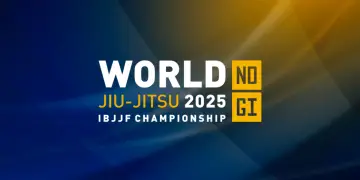It’s an incredibly common question that you might hear from either new starters or people from the outside of the sport looking in; but what do the different BJJ belts actually mean? This can be a difficult question to answer because the criteria for each belt-level is entirely subjective and there’s no standardized or widely-accepted method of determining when a student is ready for the next promotion. Some coaches might be notorious for fast promotions while others might take a much slower approach, and it’s pretty universally-accepted that hobbyists get treated differently to elite competitors.
You’ve only got to see the plethora of young teenage colored belts who’re able to submit legitimate black belts to see this second principle in action. Realistically, elite competitors are judged against their peers and you’ll find that many of them will earn the next belt promotion once they’ve achieved something huge at their current level, like a medal at the IBJJF World Championships or an impressive performance on the superfight circuit. For that reason, we’ll put those outliers to one side for a moment and take a look at what the different BJJ belts mean for the average person training in a local gym:
White Belt
This is the beginning of everyone’s BJJ journey and there’s literally zero expectation on white belts as a result. That doesn’t mean they’re all bad though, because successful high-school wrestlers or black belts in Judo who transition to the sport will also start out here, they just won’t take as long to get promoted. Realistically, this is where people are just coming to grips with the principles of the sport itself and also where they’ll make the biggest improvements in the shortest space of time. Expect plenty of mistakes to be made, but a lot of progression as those mistakes are slowly but surely fixed.
Grey/Yellow/Orange/Green Belt
Generally speaking, all of these belts are reserved for children under the age of 16. There are some schools out there that will use the green belt for adults too, as a stepping stone between white belt and blue belt, but they’re the minority. They’re generally used to keep children engaged and encouraged in the sport by increasing the number of promotions they receive, while also providing ways to divide children into fairer categories in competition. Green belt is only available to those between 13 and 16 and is roughly equivalent to a very experienced blue belt, so they’re certainly capable of challenging full-grown adults at this point.
Blue Belt
This is where people start to get some semblance of competence in the sport. At this point, people will have a good handle on body movement and should be able to feel safe in every bad position. Blue belts will also have the beginnings of an actual “game” in place. This might change as the years go on and could end up looking drastically different by the time they reach black belt, but at this point they’ll be comfortable taking the fight to the ground whether by takedown or guard-pull and they should know what they want to do next. They might not have a plan B or whole submission chains in mind just yet, but there shouldn’t be anywhere that they don’t know what they want to do.
Purple Belt
At this point on the journey through the BJJ belts, things start to really get interesting. Purple belt is where people have developed a core game that they know how to funnel the opponent into from a wide variety of positions, while also having branching submission-chains in mind as well for when plan A isn’t quite enough. When training with other higher-belts, you’ll likely see a concerted effort to force the roll into the area that they know they can dominate in, while the training with lower belts will consist of sharpening the areas that they’re weaker in instead.
Brown Belt
People often describe this stage as “almost a black belt” because that’s truly what it is. To any newer starters there can really seem to be no discernible difference between the two, because the skill gap is so huge between them and the onlooker. But to their fellow higher belts the differences might be minimal, but they’re still there. Brown belts will still have some tiny holes in their game that their fellow brown and black belts are capable of exploiting, and they might have certain guards that they avoid just purely due to preference.
Black Belt
While this might be the end in terms of belts (unless we’re talking about the BJJ belts that involve red which are essentially several stripes on a black belt, all of which denote time served) it’s certainly not the end in terms of learning. That’s part of the beauty of BJJ, the fact that there is always more to do. While black belts might seem like they know absolutely everything and they’re capable of teaching a massive number of techniques and concepts, they’re still refining the game that started all the way back at blue belt and adding in an ever-increasing number of areas to excel in.













